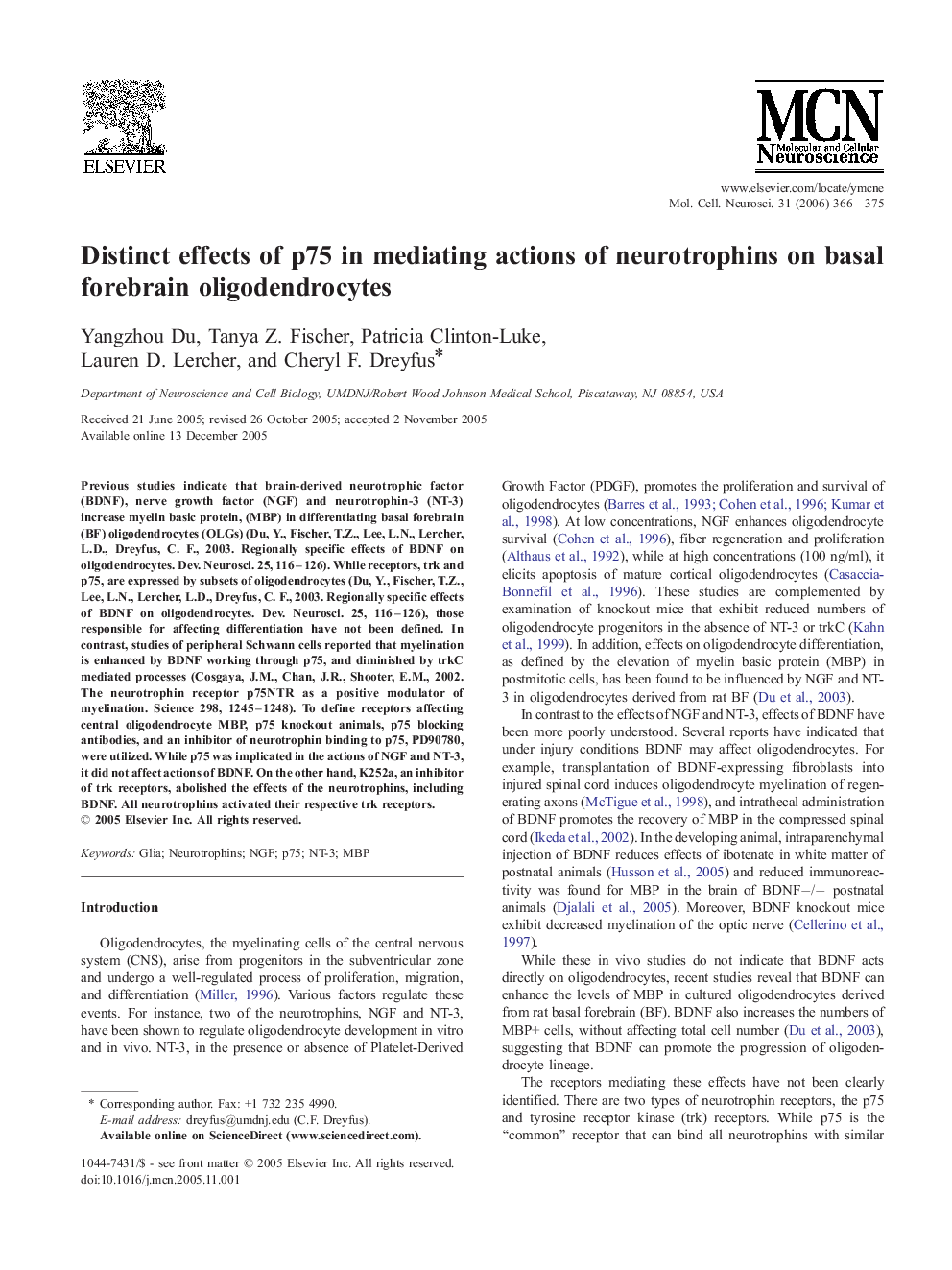| Article ID | Journal | Published Year | Pages | File Type |
|---|---|---|---|---|
| 2199456 | Molecular and Cellular Neuroscience | 2006 | 10 Pages |
Previous studies indicate that brain-derived neurotrophic factor (BDNF), nerve growth factor (NGF) and neurotrophin-3 (NT-3) increase myelin basic protein, (MBP) in differentiating basal forebrain (BF) oligodendrocytes (OLGs) (Du, Y., Fischer, T.Z., Lee, L.N., Lercher, L.D., Dreyfus, C. F., 2003. Regionally specific effects of BDNF on oligodendrocytes. Dev. Neurosci. 25, 116–126). While receptors, trk and p75, are expressed by subsets of oligodendrocytes (Du, Y., Fischer, T.Z., Lee, L.N., Lercher, L.D., Dreyfus, C. F., 2003. Regionally specific effects of BDNF on oligodendrocytes. Dev. Neurosci. 25, 116–126), those responsible for affecting differentiation have not been defined. In contrast, studies of peripheral Schwann cells reported that myelination is enhanced by BDNF working through p75, and diminished by trkC mediated processes (Cosgaya, J.M., Chan, J.R., Shooter, E.M., 2002. The neurotrophin receptor p75NTR as a positive modulator of myelination. Science 298, 1245–1248). To define receptors affecting central oligodendrocyte MBP, p75 knockout animals, p75 blocking antibodies, and an inhibitor of neurotrophin binding to p75, PD90780, were utilized. While p75 was implicated in the actions of NGF and NT-3, it did not affect actions of BDNF. On the other hand, K252a, an inhibitor of trk receptors, abolished the effects of the neurotrophins, including BDNF. All neurotrophins activated their respective trk receptors.
